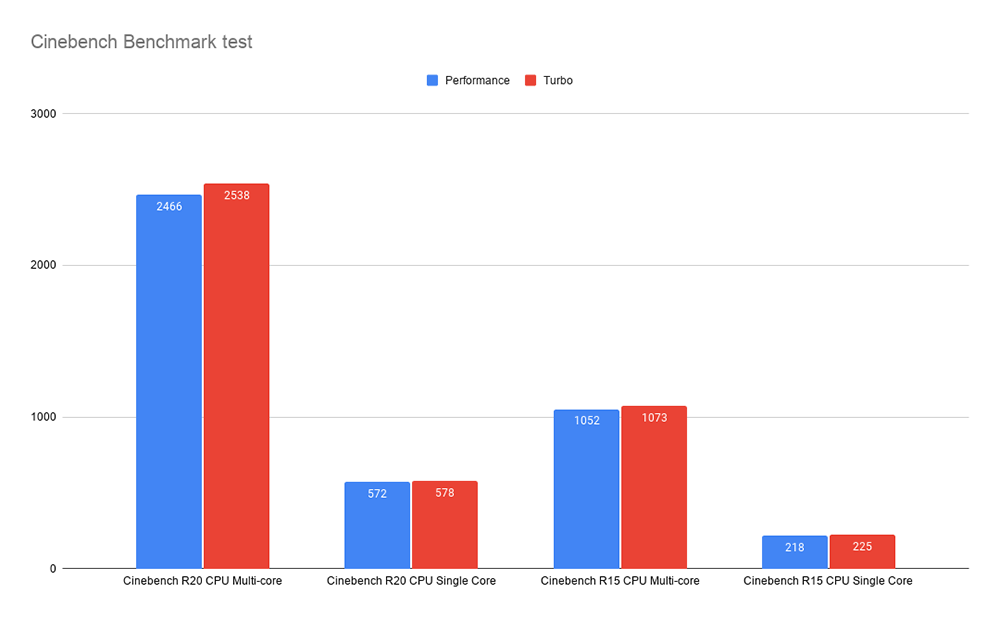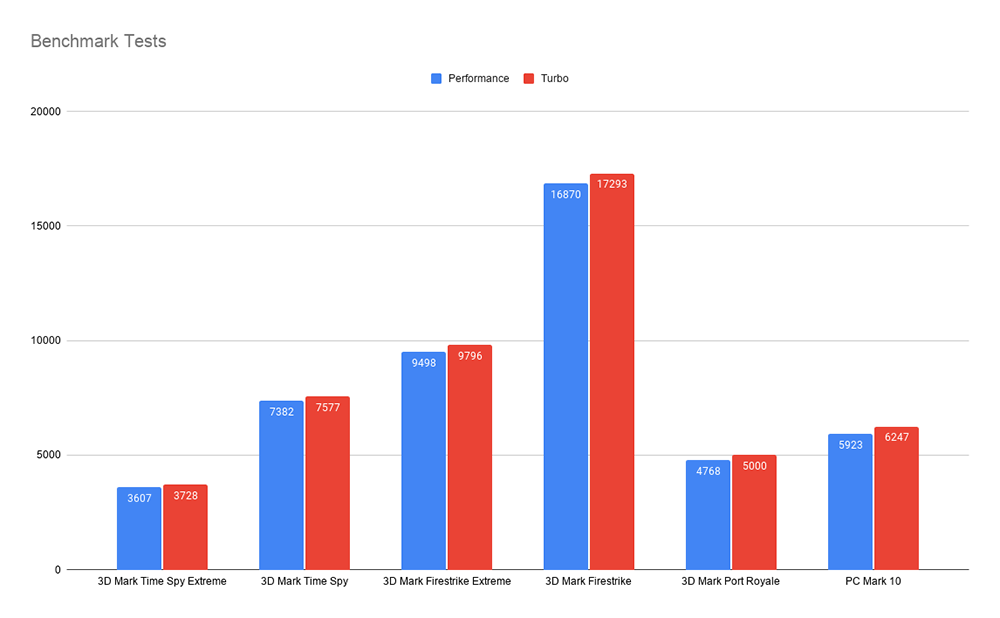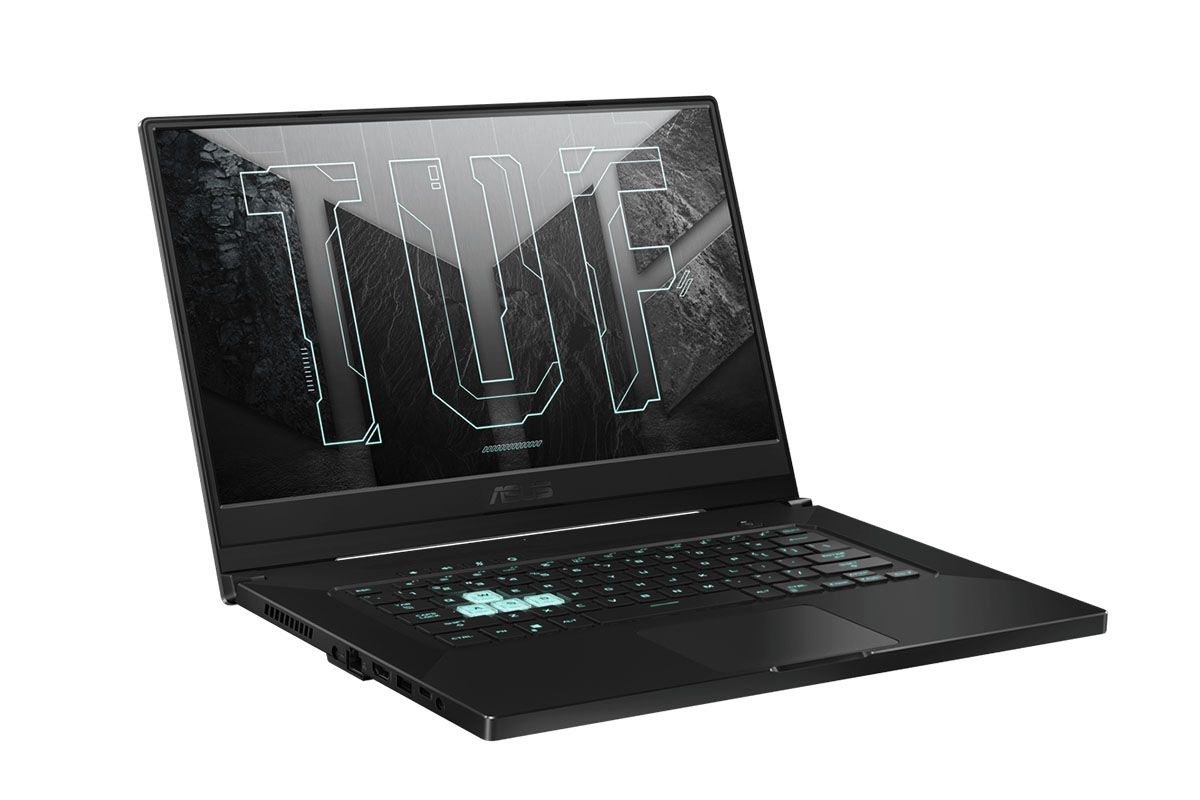Gaming laptops are going through a transformative phase. Many laptop makers have started using AMD parts over Intel because the new Ryzen 5000 mobile series offers great performance. Intel is now playing catch up but has managed to come up with only a handful of quad-core processors for thin and light gaming laptops under its new Tiger Lake H-Series.
Meanwhile, NVIDIA brought its new GeForce RTX 30 series of GPUs to laptops earlier this year, but with a bit of a twist. Depending on the power configurations set by the laptop manufacturers, these new GPUs can provide variable levels of performance. But unlike the last generation where this drop in power was denoted by attaching a ‘Max-Q’ at the end of the GPU name, NVIDIA now requires laptop makers to specify the kind of power consumers can expect, causing some confusion. Given all of these factors as well as the global chipset shortage, consumers should be careful about spending their money on a new gaming laptop this year.
For those in the market for a new gaming laptop though, one product that just came out is the ASUS TUF Dash F15. It is one of the first gaming laptops announced this year with Intel’s new 11th-gen Tiger Lake H-Series which, in my opinion, makes it one of the most anticipated gaming laptops of 2021. The reason for that is because it uplifts ASUS’s TUF brand into a whole new category. It aims to be a powerful slim and lightweight 15-inch gaming laptop, and honestly, ASUS has done a fine job here. With up to an NVIDIA GeForce RTX 3070 graphics card and a 240Hz refresh rate display, the TUF Dash F15 sounds like a fine choice for gamers. But is it actually worth it?
ASUS TUF Dash F15: Specifications
| Specification | ASUS TUF Dash F15 |
|---|---|
| Dimensions & Weight |
|
| Display |
|
| Processor |
|
| GPU |
|
| RAM & Storage |
|
| Battery & Charger |
|
| I/O |
|
| Connectivity |
|
| OS |
|
| Other Features |
|
About this review: ASUS India sent us the ASUS TUF Dash F15 for review. This review has been written after about 15 days of regular use and no third party has any input into the contents of this article.
ASUS TUF Dash F15: Design
The ASUS TUF Dash F15 is offered in either Eclipse Grey or Moonlight White, and as you can see, ASUS sent us the latter. It has a striking design, and I absolutely love how ASUS is pushing itself to bring a unique experience to customers. Sure, a white laptop means that it will get dirty real quick, but honestly, I didn’t have to do anything beyond just a few wipes from a cloth to keep the TUF Dash F15 clean. ASUS says the paint will last longer, so you shouldn’t worry about the color getting dull over time. Also, this is specifically for the white color variant, which means you can always go for the darker grey version, which is also a bit cheaper in price.



I absolutely love how ASUS is pushing itself to bring a unique experience to customers
The overall build of the TUF Dash F15 is solid and looks very premium, just like the ROG Zephyrus series. In fact, ASUS has implemented some of the design choices that we have seen on older Zephyrus laptops. First of all, the TUF Dash F15 doesn’t have a webcam just like the Zephyrus G14 series and the new G15 announced earlier this year. Some would argue that gaming laptops don’t really need a webcam and that smartphones are way better at video calling, but with the surge of work-from-home over the last year, this feels like a missed opportunity.
The laptop does come with an array-style microphone system, and ASUS also markets two-way AI noise cancelation as one of the top features on the TUF Dash F15. However, one of the best potential uses of this microphone system would be for video calls, but that isn’t possible out of the box since there’s no webcam. I don’t know where to assign blame, but every design choice has to be for a reason, so I have to chalk this one up to being a poor decision.


The lack of a webcam is a poor decision from ASUS
The new ASUS TUF Dash F15 is more or less a refined version of the TUF A15 from last year. It is slimmer and lighter and, at the same time, has a very sturdy chassis with clean lines. The branding sees some changes with the new TUF logo on the top corner of the lid and the brand name across the lid on the opposite side. I’ll give it some extra points for its ruggedness as it meets military-grade MIL-STD standards, ensuring that the chassis can take minor bumps. I also noticed some nice rubber padding on the inside of the lid for protection and some extra feet at the bottom so that there is enough room for the internal fans to pull in air.
The exhaust vents are on the back and sides, and you can feel the hot air coming out of them, especially on the sides since you need to use a mouse while gaming. The vents take some of the space on the left and right sides, hence the I/O ports have been moved further down. The charging port on the TUF Dash F15 is on the left edge, along with an RJ45 Ethernet port, an HDMI port, a USB Type-A port, a USB-C port, and a 3.5mm headphone and mic combo jack. On the other side, you get two more USB Type-A ports.


With the help of a pry tool, you can get access to the internals after removing all the screws at the bottom. Underneath, the ASUS TUF Dash F15 offers two M.2 SSD slots, so there is room for adding more storage to the laptop. The laptop makes use of dual-channel memory with 8GB soldered onto the board itself, but a secondary SODIMM slot can be used to upgrade the memory on the TUF Dash F15. Similarly, the Wi-Fi module can also be upgraded or replaced rather easily. Below, you can see the five heat pipes along with the two fans that take care of the thermals and the 76Whr battery that powers the ASUS TUF Dash F15.

Complementing the look of the laptop is the unique mint-green colored LED lighting under the keyboard. The addition of RGB would have been nice, but I have no real complaints here as I love the color when it shines through the transparent WASD keys. The keys themselves feel good in terms of feedback, and I was able to quickly get used to typing on the ASUS TUF Dash F15 since the keys are well spaced out. For some reason, ASUS no longer offers a Print Screen key anywhere on its laptops, which was mildly annoying to me as I have a habit of using it. However, there is a shortcut for the built-in Windows snipping tool that pretty much offers the same functionality. The keyboard deck itself is quite spacious and sturdy with four dedicated keys up top that include volume controls, mic mute/unmute, and a shortcut for ASUS’s Armory Crate software. The trackpad is just fine and very smooth to use with support for most of your common gestures. The green color makes an appearance here as well with subtle accents.

The keys themselves feel good in terms of feedback
ASUS TUF Dash F15: Display
ASUS clearly had eSports in mind while choosing the panel to use in the TUF Dash F15. The laptop offers a 240Hz refresh rate along with Adaptive Sync and 3ms response time. It also offers good color and contrast performance with 100% coverage of sRGB alongside Pantone validation. The panel has a matte anti-glare coating on top, and since it uses an IPS panel, you can expect those wide viewing angles. Brightness could have been better, but it felt adequate to me when using the laptop indoors, especially while gaming or streaming content on Netflix. ASUS offers a lower 144Hz refresh rate model, but that comprises the overall color quality.
I liked how ASUS trimmed the side and top bezels on the TUF Dash F15. They aren’t super slim like the ones we see on premium ultrabooks, but the small bezels do make them less distracting. The gray rubber padding all around the display is also appreciated as it ensures that the keys don’t leave marks on the display panel.

My only concern with the display is that most of the games that I tested didn’t go beyond 144fps, making the 240Hz panel sort of overkill. The number sounds impressive on paper, and while some games like CS: GO will actually push these frame rates, I think ASUS could have cut some costs here. I would have preferred a single 144Hz refresh rate panel option without compromising the color calibration goodness.
ASUS TUF Dash F15: Performance
As previously mentioned, the ASUS TUF Dash F15 is powered by an 11th-gen Intel Tiger-Lake H35 series processor, the Core i7-11370H, that comes with four cores, eight threads, boost clock speeds of up to 4.8GHz, and Iris Xe integrated graphics. The chip is based on a similar architecture as the Core i7-1185G7 or the Core i7-1165G7 that we’ve seen on a variety of ultrabooks, but you get faster clock speeds and a higher TDP (Thermal Design Power) rating of 35W. It is paired with 16GB of DDR4 RAM at 3200MHz speeds, while NVIDIA’s new GeForce RTX 3070 GPU takes care of your gaming needs. You need to pay attention to the fact that ASUS is offering a low-powered 80+5W variant of the RTX 3070 to keep a check on the temperatures inside the slim chassis of the laptop. This is where things get interesting.
Customers need to understand that while the ASUS TUF Dash F15 is s full-fledged RTX 3070 gaming laptop capable of handling most AAA gaming titles, it is not going to be as performant as some of the other RTX 3070 gaming laptops out there. For instance, the new Gigabyte AORUS 15P also comes with an RTX 3070 mobile GPU, but the company has configured it with 130W of power. Essentially this means that it can outperform the TUF Dash F15 by 15-20% when it comes to graphics performance. The fine line here is that ASUS has a machine that is 0.2kg lighter and slimmer by 7.1mm. It doesn’t sound like a huge trade-off, but at the end of the day, it is up to consumers to decide whether they want the full potential of the RTX 3070 or have a gaming laptop that is easier to handle and carry around.

Armory Crate software
As for the performance experience, it didn’t stutter at any given instance and managed to handle my workloads effortlessly. I was able to open over 20 Chrome tabs, stream music via Spotify, and have a bunch of apps running in the background including Slack, Discord, Steam, etc. Even basic photo editing on Adobe Photoshop was a breeze. The CPU shows signs of struggle when you throw high-res videos at it for rendering or other processor-intensive tasks. This was also evident in the Cinebench benchmark tests where the Core i7-11370H scored only a few points above the Core i7-1185G7 and way behind the Core i7-10875H from last year that I tested on the Lenovo Legion 7i. The laptop comes with three performance presets — Silent, Performance, and Turbo — that you can set manually by heading to the Armory Crate software or by hitting the Fn+F5 key. I did most of my testing while setting the mode to Turbo, where it cranks up the power and fan speeds. For comparison sakes, I also did all of the benchmark tests using the Performance and Turbo modes.


Gaming performance is middling. The new RTX 3070 is based on NVIDIA’s Ampere architecture and offers support for next-gen Ray tracing for excellent visuals and DLSS tech to give a boost to the overall resolution and performance. While you should be able to get around 90-100fps in most gaming titles cranked up to the maximum settings, some eSports titles like Apex Legends and PUBG played well above 130fps. AAA titles with Ray tracing take the GPU to its limits, so don’t expect Cyberpunk 2077 to run at anything beyond 40-50fps at ultra settings.

By using a fairly less power-hungry CPU and reducing the overall power draw on the GPU, ASUS manages to keep the thermals in check on the TUF Dash F15. I recorded an average of 76°C on the CPU and about 70°C on the GPU while gaming, which is impressive and pretty much under control. Under stress, the CPU went to a maximum of 95°C and the GPU stayed fairly under control at 76°C. In storage tests with the 1TB NVMe SSD, read speeds go up to 3,506MBps and write speeds of 2,736MBps on the CrystalDisk benchmark.

Battery Life & Charging
The battery on the ASUS TUF Dash F15 is rated at 76Whr, which ASUS claims offers up to 16.6 hours of video playback. I am not sure what the conditions were for the company’s testing, but I ran a YouTube video on loop at 1080p resolution with the brightness set around the 50% mark. I got about 7 hours of battery life which honestly isn’t all that bad considering how slim and lightweight the laptop is. It is also worth noting that once you unplug the laptop from the charger, the Armory Crate software switches to the “Silent” mode automatically, thereby switching to the Intel onboard graphics, lowering the processor clock speeds, and dropping the screen refresh rate to 60Hz for extended battery life. Thus, your mileage may vary when it comes to battery life, as it depends on what mode you have enabled in Armory Crate.
The TUF Dash F15’s charging brick is rated at 200W and is fairly slim to carry around. The laptop can also be charged via the USB-C/Thunderbolt 4 port that supports up to 100W speeds, which is a great option to have if you don’t want to carry around the standard barrel charger with you. I was able to charge the laptop using a standard 65W USB-PD charger from Aukey. Of course, you will need the supplied charger if you want to crank up the gaming performance and make full use of the RTX 3070 graphics card.
Conclusion: Is the ASUS TUF Dash F15 worth buying?
Go for the ASUS TUF Dash F15 if you are looking for a gaming laptop that offers a good balance between performance and portability. It’s easy to carry around, looks neat, and with up to 7-8 hours of battery life, it should be a great companion for when you want to work from that new coffee shop you always wanted to visit.
You will have to make some compromises though. For instance, the lack of a built-in webcam means you can’t do video calls without an external webcam or a smartphone, and the thermal design means it won’t be as fast as other similarly specced laptops. However, it also isn’t very expensive, which is important to note at a time when getting your hands on a new piece of gaming hardware is either next to impossible or comes at a terrible cost.
You can get the ASUS TUF Dash F15 with the NVIDIA RTX 3070 GPU for ₹1,41,000 in India or about $1,500 in the US. The RTX 3060 model that comes with a 144Hz refresh rate display is currently not available in India, but if you are in the US, you can get it for $1,150.
- The ASUS TUF Dash F15 is one of the first laptops to feature Intel's new 11th-gen Tiger Lake processor made for thin and light gaming laptops along with NVIDIA's latest RTX 30 series mobile GPUs
|
Features: |
|
|
|
Pros: Cons: |
The post ASUS TUF Dash F15 Review: An Ambitious Thin and Light Gaming Laptop appeared first on xda-developers.
from xda-developers https://ift.tt/3vgOd3m
via IFTTT


No comments:
Post a Comment